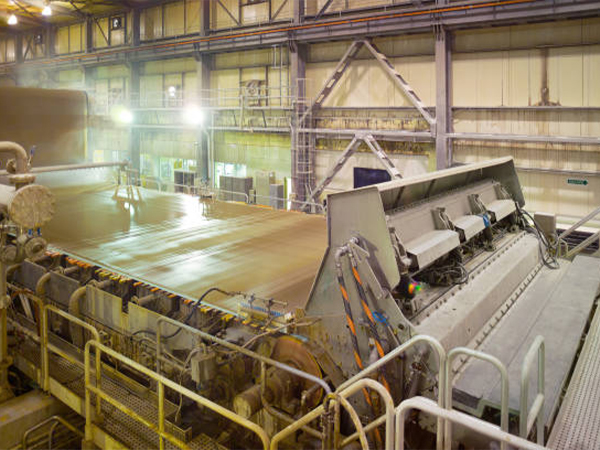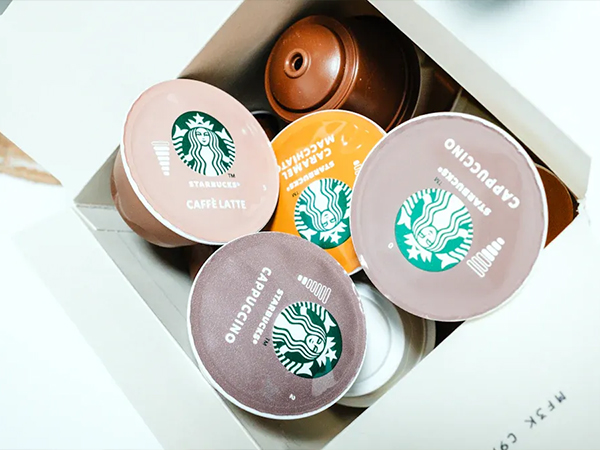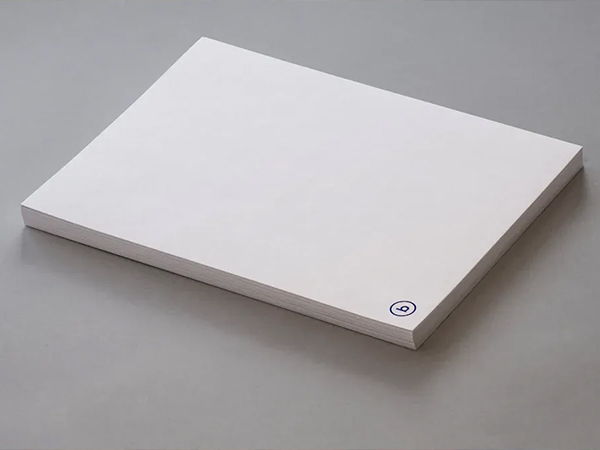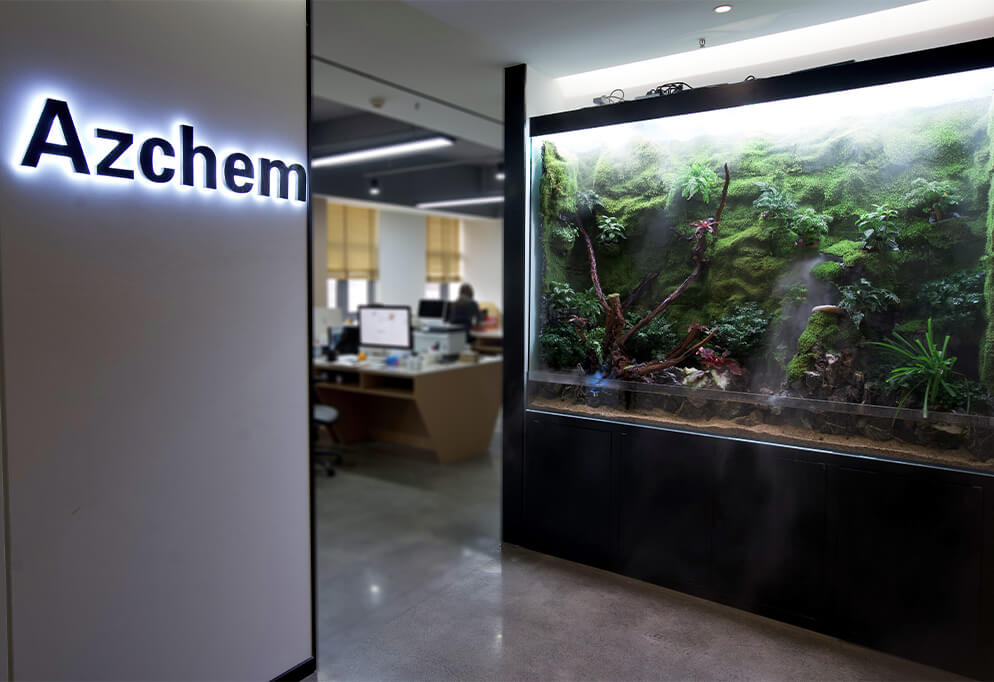
You can now rely on fluorine-free coatings as effective alternatives to PFAS in oil-resistant paper packaging. Manufacturers like you see a surge in requests for sustainable solutions. The global demand for sustainable oil-resistant packaging solutions is projected to grow at a compound annual growth rate of 5.3% from 2025 to 2035. Your choices increasingly reflect concerns about environmental impact and human health, making safety and performance top priorities.
Key Takeaways
- Fluorine-free coatings provide effective oil resistance, matching or exceeding traditional PFAS coatings. Look for a Kit rating of 12/12 for maximum oil resistance in food packaging.
- Choosing fluorine-free coatings helps protect the environment by reducing harmful chemical pollution. These coatings support biodegradable and compostable packaging options.
- Regulatory changes are pushing manufacturers to adopt fluorine-free alternatives. Stay informed about local regulations to ensure compliance and meet consumer demand for safer products.
- Fluorine-free coatings are safe for food contact and do not leach harmful chemicals. This choice supports public health and enhances consumer trust in your packaging.
- Investing in fluorine-free coatings may involve initial costs, but the long-term benefits include regulatory compliance and appealing to eco-conscious consumers.
Fluorine-Free Coatings Overview

Oil Resistance Properties
You can achieve impressive oil resistance with fluorine-free coatings. Manufacturers now rely on advanced chemical components to create effective barriers against grease and oil. The following table highlights the main chemical ingredients used in these coatings and their oil resistance ratings:
| Chemical Component | Description | Oil Resistance Rating |
|---|---|---|
| Polylactic Acid (PLA) | Biodegradable material from starch | N/A |
| Starch | Natural polymer used for coating | N/A |
| Chitosan | Derived from chitin, enhances oil resistance | Kit rating of 12/12 after modification |
| Nanocellulose | Renewable resource, provides barrier properties | N/A |
| Protein (Corn Protein) | Used in coatings for oil resistance | Kit rating of 12/12 |
| Fluorine-Free Cellulose | Coating with good barrier properties | N/A |
You can measure oil resistance using standardized laboratory tests. The Kit Test and Cobb Test are the most common methods. The Kit Test, following TAPPI T559 and TAPPI 454 standards, evaluates how well the coating blocks grease by applying chemical solutions and observing oil penetration. A higher rating means better oil repellency. The Cobb Test, standardized by ISO 535, measures water absorption and helps ensure food safety for packaging with a basis weight over 50 g/m².
Recent studies show that fluorine-free coatings deliver oil and grease resistance ratings that rival PFAS-based coatings. Over 25 fluorine-free formulations have achieved high resistance scores, ranging from 9 to 12 on the TAPPI Test Method T559. These results match or even surpass the performance of traditional PFAS coatings, giving you confidence in their effectiveness for food packaging and other demanding applications.
Tip: When selecting a coating, always check the Kit rating. A score of 12/12 indicates maximum oil resistance, which is ideal for food service packaging.
Environmental Benefits
You make a positive impact on the environment when you choose fluorine-free coatings. A recent three-year EU lifecycle assessment compared fluorinated and fluorine-free alternatives for oil and water repellency. The study found that fluorinated formulations have a negative environmental impact that is 10 to 40 times larger than fluorine-free coatings. This dramatic difference highlights the sustainability advantage of switching to fluorine-free solutions.
- You reduce persistent chemical pollution in soil and water.
- You support biodegradable and compostable packaging options.
- You help lower the carbon footprint of your supply chain.
Fluorine-free coatings align with global sustainability goals and regulatory trends. By adopting these alternatives, you protect both human health and the planet, while meeting the growing demand for responsible packaging.
Industry Shift from PFAS
Health and Environmental Concerns
You face increasing pressure to move away from PFAS in packaging due to well-documented health and environmental risks. PFAS, often called “forever chemicals,” persist in the environment for thousands of years. They leach from packaging into soil and water, contaminating ecosystems and bioaccumulating in wildlife. This contamination disrupts food chains, especially in aquatic environments.
The health risks linked to PFAS exposure in food packaging are serious. The table below outlines the main concerns:
| Health Risk | Description |
|---|---|
| Reproductive effects | Decreased fertility or increased high blood pressure in pregnant women. |
| Developmental effects | Delays in children, including low birth weight and behavioral changes. |
| Cancer risk | Increased risk of prostate, kidney, and testicular cancers. |
| Immune response | Reduced ability to fight infections and reduced vaccine response. |
| Hormonal interference | Disruption of the body’s natural hormones. |
| Cholesterol levels | Increased cholesterol levels and/or risk of obesity. |
You should also note the historical context. As early as 1966, the FDA rejected PFAS as a food additive due to liver studies. By 1973, internal studies at DuPont showed liver damage from PFAS exposure in food packaging. Today, you see links to fertility issues, increased cholesterol, immune system changes, and higher risks of certain cancers and thyroid disease.
Regulatory Drivers
You must keep up with a rapidly changing regulatory landscape. Governments worldwide have introduced strict measures to limit or ban PFAS in food packaging. The following table summarizes recent regulatory changes:
| Region | Regulation Details | Effective Date |
|---|---|---|
| EU | Regulation (EU) 2025/40 prohibits food-contact packaging with PFAS exceeding content limits. | 12 August 2026 |
| US | States like Vermont and Connecticut have PFAS restrictions; New Mexico phases out products with PFAS. | 1 January 2027 |
| Australia | Nationwide measures under the Industrial Chemicals Environmental Management Standard to restrict PFAS. | 1 July 2025 |
Many countries and states have already implemented bans or restrictions. Denmark banned PFAS in food contact paper and cardboard in 2020. States such as New York, California, and Washington have prohibited food packaging with intentionally added PFAS.
You see this shift driven by several key factors:
- Regulatory pressures push you to seek alternatives.
- Consumers demand safer products without harmful chemicals.
- The desire for compostable materials encourages you to move away from PFAS, especially as some compostable items were found to contain these chemicals.
You can meet these challenges by adopting Flurorine-Free Coatings, which align with both regulatory requirements and consumer expectations for safety and sustainability.
How Fluorine-Free Coatings Work
Barrier Technologies
You rely on barrier technologies to achieve oil resistance in paper packaging. These technologies use a range of natural and synthetic materials that form a protective layer on the paper surface. Each material brings unique characteristics to the coating, helping you meet different packaging needs. The table below highlights the main types of barrier materials and their key features:
| Material Type | Characteristics |
|---|---|
| Acrylate | Improved water and oil repellency, good mechanical strength, recyclability, excellent gas barrier properties |
| Chitosan | Harmless to human body, environmentally friendly |
| Cellulose | Multi-functional oil repellents |
| Protein | Enhanced oil-proof mechanism |
You can see how these materials work together to create a strong oil barrier. They modify the surface energy of the paper, increase the oil contact angle, and form a uniform layer that blocks grease. Instead of using perfluorinated chains, these coatings rely on hydrophobic polymer films. This approach helps you achieve high oil resistance while avoiding harmful chemicals.
Tip: When you select a barrier technology, consider both the oil resistance rating and the environmental profile of the material.
Application Methods
You apply these coatings using methods similar to those used for traditional PFAS-based coatings, but you may need to adjust your processes. For example, advanced Diamond-Like Carbon (DLC) coatings offer a low friction coefficient and high durability, matching the performance of PFAS options. However, you must ensure your equipment and processes are compatible with these new materials.
Switching to fluorine-free coatings sometimes requires investment in new machinery or process changes. Many manufacturing lines were designed for PFAS, so you may need to update your systems. The benefit is clear: you gain compliance with global regulations and reduce environmental and health risks. You also maintain the oil-resistant properties your customers expect, without relying on harmful fluorinated compounds.
- You can use standard industrial coating techniques, such as curtain coating, blade coating, or spray application.
- You should monitor coating thickness and uniformity to ensure consistent oil resistance.
- You may need to test and optimize drying times for each new formulation.
By understanding both the barrier technologies and application methods, you position yourself to make the most of fluorine-free coatings in your packaging operations.
Performance and Adoption
Effectiveness in Food Packaging
You expect high standards when selecting materials for food packaging. Recent research confirms that fluorine-free coatings deliver strong oil and water resistance, even under demanding conditions. The following table summarizes key performance indicators from recent studies:
| Feature | Result |
|---|---|
| Water Contact Angle | 114.9° ± 3° |
| Oil-Resistance Rating | 12/12 (highest according to TAPPI standards) |
| Resistance to Hot Oil | Stable for 30 min at 95 °C without leakage |
| Mechanical Strength | 21.26 MPa |
| Biodegradability | Excellent |
You see that these coatings not only block oil and grease but also maintain their integrity when exposed to hot liquids. This performance matches or exceeds traditional PFAS-based coatings, making them suitable for fast food wrappers, bakery liners, and takeaway containers.
Manufacturers have developed advanced formulations using rosin, shellac, and calcium carbonate nanoparticles. These coatings retain superhydrophobic properties even after repeated abrasion, such as 30 knife strokes, and maintain their effectiveness after outdoor exposure for one week. You benefit from additional features like oxidation resistance and self-cleaning surfaces, which help keep packaging hygienic and visually appealing.
You can find fluorine-free coatings in a wide range of food packaging products. The table below highlights two popular options:
| Product Name | Description | Key Features |
|---|---|---|
| Azfc® 60F | Sustainable fluorine-free oil repellent for grease resistance | PFAS-free, recyclable, cost-effective, ideal for light to moderate grease protection |
| Azfc® 90F | High-performance oil repellent for advanced greaseproof applications | Heat resistant, excellent barrier for oily foods, compliant with food contact standards |
You also see industry-wide initiatives like the “ZeroF” project, which aims to replace PFAS with renewable materials. These new materials resist water, oil, and grease, and help reduce environmental impact by at least 25%. As a result, you can offer packaging that meets both performance and sustainability goals.
Note: When you choose fluorine-free coatings, you support safer food packaging without sacrificing quality or durability.
Market Trends
You operate in a market that is rapidly shifting toward sustainable solutions. Several factors drive the adoption of fluorine-free coatings in oil-resistant paper packaging:
| Factor | Description |
|---|---|
| Impact of Regulations | The global phasing out of PFAS is creating demand for fluorine-free alternatives, driven by strict regulations on food safety and environmental protection. |
| Sustainability Concerns | Increased consumer awareness of environmental impacts is pushing demand for biodegradable and recyclable packaging. |
| Health and Safety | The absence of PFAS in packaging is appealing to consumers focused on food safety and health. |
| Technological Advancements | Research is ongoing to enhance barrier properties and recyclability of fluorine-free coatings. |
| Key Regions | East Asia, particularly China, leads the market due to its food processing industry and environmental regulations. Europe and North America also show significant growth potential. |
You notice that East Asia, especially China, leads the adoption of these coatings, thanks to its large food processing sector and strict environmental rules. Europe and North America are also seeing strong growth as regulations tighten and consumers demand safer, greener packaging.
You can look to real-world examples for inspiration. The firefighting foam industry, for instance, has shifted toward fluorine-free foams due to regulatory pressure. Manufacturers now produce foams that meet international standards without PFAS, proving that high performance and sustainability can go hand in hand. In the medical field, researchers have developed a fluorine-free bilayer SLIPS coating for blood-contacting devices. This innovation offers superior lubricity, self-healing, and long-term stability, showing the versatility and effectiveness of these new materials.
You can expect continued innovation and broader adoption as more companies recognize the benefits of fluorine-free coatings. By staying informed about market trends and proven solutions, you position your business to meet regulatory requirements and satisfy consumer expectations.
Safety and Sustainability

Human Health Impact
You prioritize safety when choosing packaging materials for food products. Flurorine-Free Coatings help you reduce exposure to harmful chemicals. These coatings do not contain PFAS, which are linked to health risks such as cancer and hormone disruption. You protect consumers from toxic substances by selecting alternatives that use natural polymers like cellulose and chitosan. These materials do not leach hazardous compounds into food or the environment. You support public health by adopting coatings that meet strict safety standards.
Note: You can assure your customers that packaging with fluorine-free coatings does not contribute to chemical contamination in food.
Recyclability and Compostability
You improve the sustainability of your packaging by using coatings that support recycling and composting. Research shows that fluorine-free coatings allow you to recycle paper packaging without compromising pulp quality. The coating separates easily during the recycling process, so you recover clean, high-quality fiber. You can also choose fully biobased cellulose and chitosan composites, which resist oil and water while remaining biodegradable and recyclable.
You offer packaging that breaks down in both industrial and home composting environments. This approach helps you reduce landfill waste and support a circular economy. You demonstrate environmental responsibility by choosing materials that align with global sustainability goals.
Innovations in Fluorine-Free Coatings
Water-Based Emulsions
You see rapid progress in water-based emulsions for oil-resistant packaging. These emulsions offer a safer and more sustainable alternative to traditional coatings. Manufacturers design these products to deliver strong oil and water repellency without relying on harmful chemicals. You benefit from easy application and compatibility with existing production lines. The following table highlights recent advances in water-based emulsions:
| Product Name | Description |
|---|---|
| Fluorine-Free Water & Oil Repellent | Used in industrial sewage treatment, RO membrane systems, and landfill leachate management. |
| Water based liquid proof coating for textile | Non-toxic, super hydrophobic and oleophobic nano coating. Water-based, breathable, bio-compatible, resists harsh detergents, maintains self-cleaning properties for up to 30 washes. |
| Water based superhydrophobic coating | Eco-friendly, free from PFOA and PFOS, meets EU standards, stable with additives, excellent waterproof and oil-proof properties, suitable for various application methods. |
You can apply these coatings using standard techniques, such as spraying or dipping. The water-based nature of these emulsions reduces volatile organic compound emissions and supports workplace safety. You achieve reliable oil resistance while meeting environmental regulations.
New Formulations
You notice a shift in the food packaging industry toward safer, non-fluorinated coatings. These new formulations address consumer concerns about chemical migration and food safety. You find non-fluorinated coatings in microwave popcorn bags, fast food wrappers, and other grease-resistant containers. Manufacturers now use silicon-based systems that meet strict performance and safety standards.
- You gain longer service intervals on robotic components exposed to oil mist, improving operational efficiency.
- You support efficient recycling processes, as these coatings separate easily from paper fibers.
- Major consumer brands specify non-fluorinated coatings to meet sustainability commitments.
Recent scientific advances focus on superhydrophobic textiles and smart response technologies. You see innovations in organosilicon, polyurethane, and polyacrylate materials. These coatings provide self-cleaning, oil-water separation, and anti-icing features for various applications. You benefit from environmentally friendly solutions that align with global sustainability goals.
Tip: You can select new formulations that simplify recycling and composting, helping your business meet both regulatory and consumer expectations.
Challenges and Future Outlook
Cost and Scalability
You face significant financial hurdles when you transition to fluorine-free coatings. The high cost of raw materials and the complexity of manufacturing processes drive up expenses. These factors make fluorine-free coatings less competitive, especially if you operate in a price-sensitive market or run a smaller company. You may need to invest in new equipment or modify your production lines to handle these advanced coatings. This investment can strain your budget and slow down large-scale adoption.
You also encounter challenges with supply chain logistics. Sourcing sustainable raw materials at scale remains difficult. As demand grows, you may see fluctuations in pricing and availability. You must balance the need for high-performance coatings with the reality of tight margins and market competition.
Tip: You can offset some costs by highlighting the long-term benefits of compliance and sustainability to your customers.
Research and Development
You see rapid innovation in the field of fluorine-free coatings. Research teams focus on several key priorities:
- Sustainability and environmental impact
- Performance optimization for oil and water resistance
- Integration of innovative materials, such as biopolymers
- Enhanced durability and versatility for diverse packaging needs
- Collaboration with universities and end-users to accelerate breakthroughs
You notice that companies invest heavily in R&D to create coatings that match or exceed the performance of PFAS-based products. Many projects aim to develop biopolymer-based coatings that offer both sustainability and high barrier properties. You benefit from partnerships between industry and academia, which help solve technical challenges and speed up product development.
The future looks promising for fluorine-free coatings. Market forecasts show strong growth, driven by regulatory pressure, consumer demand, and corporate sustainability goals.
| Year | Market Size (USD Billion) | CAGR (%) | Forecasted Value (USD Billion) |
|---|---|---|---|
| 2024 | 1.42 | N/A | N/A |
| 2025-2033 | N/A | 7.3 | 2.68 |
You can expect continued momentum as more companies commit to safer, greener packaging solutions.
Fluorine-free coatings give you a safe, effective, and sustainable solution for oil-resistant paper packaging. You face new challenges as you transition, such as reformulating products, retraining teams, and managing higher costs.
- You must ensure regulatory compliance and communicate benefits clearly to consumers.
- Brands need to innovate and reinvent product offerings to meet rising expectations.
- Eco-labels and performance metrics now shape purchasing decisions, especially for younger consumers.
Ongoing innovation will drive the future of sustainable packaging. Will you lead the shift toward safer, greener solutions?
FAQ
What makes fluorine-free coatings oil-resistant?
You benefit from advanced barrier technologies. These coatings use natural polymers and engineered materials to block oil and grease. The surface repels contaminants, keeping food packaging clean and safe.
Are fluorine-free coatings safe for food contact?
You can trust fluorine-free coatings for food packaging. Manufacturers design these coatings to meet strict safety standards. They do not leach harmful chemicals into food, supporting consumer health.
Can you recycle paper packaging with fluorine-free coatings?
You recycle fluorine-free coated paper easily. The coatings separate from fibers during processing, allowing you to recover high-quality pulp. This supports circular economy goals and reduces landfill waste.
Do fluorine-free coatings cost more than PFAS-based options?
You may pay a premium for fluorine-free coatings. The cost reflects sustainable raw materials and advanced manufacturing. Over time, you offset expenses by meeting regulations and appealing to eco-conscious consumers.
Where can you find fluorine-free coated packaging?
You find fluorine-free packaging in fast food wrappers, bakery liners, and takeaway containers. Major brands and suppliers now offer these products to meet market demand for safer, greener solutions.






